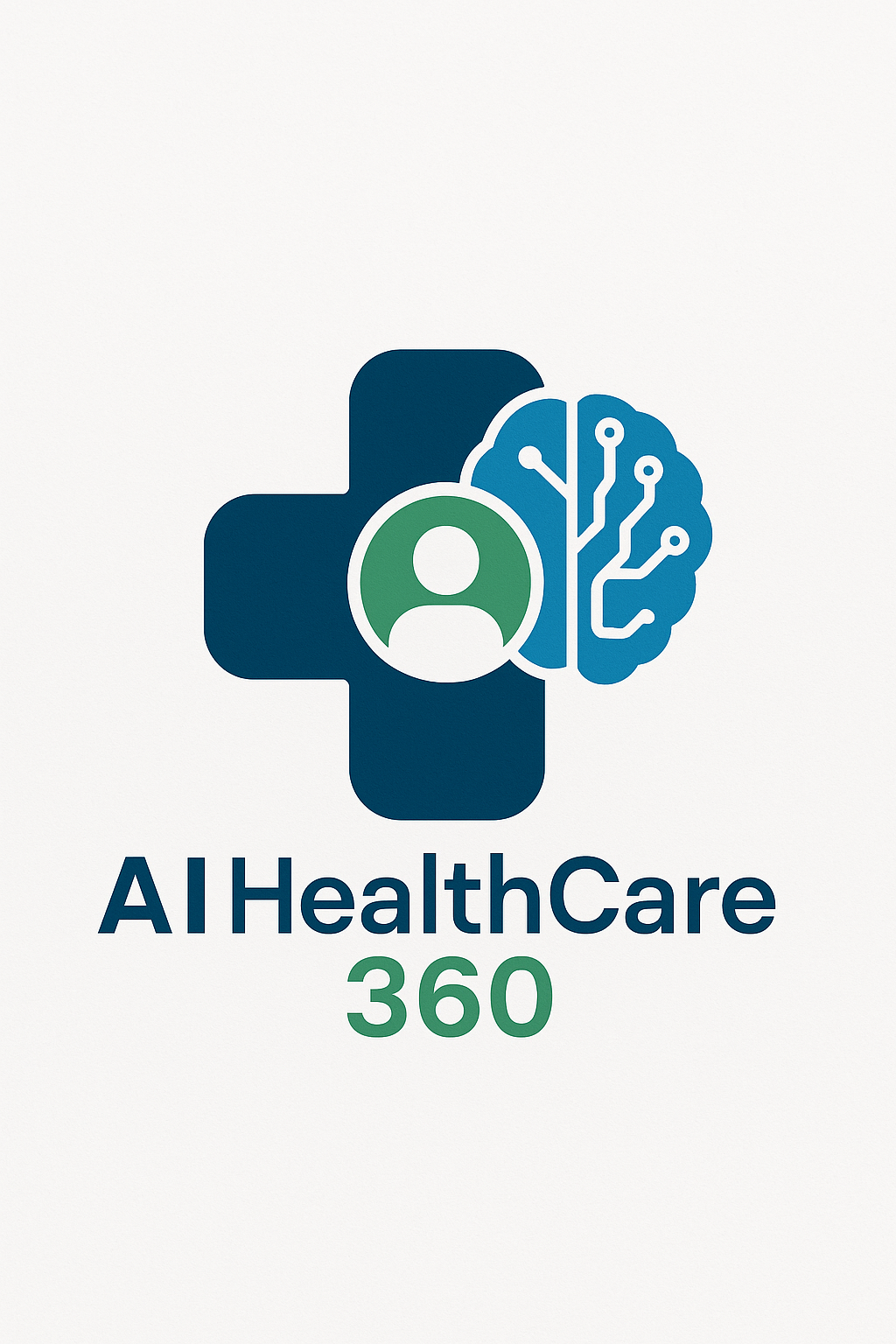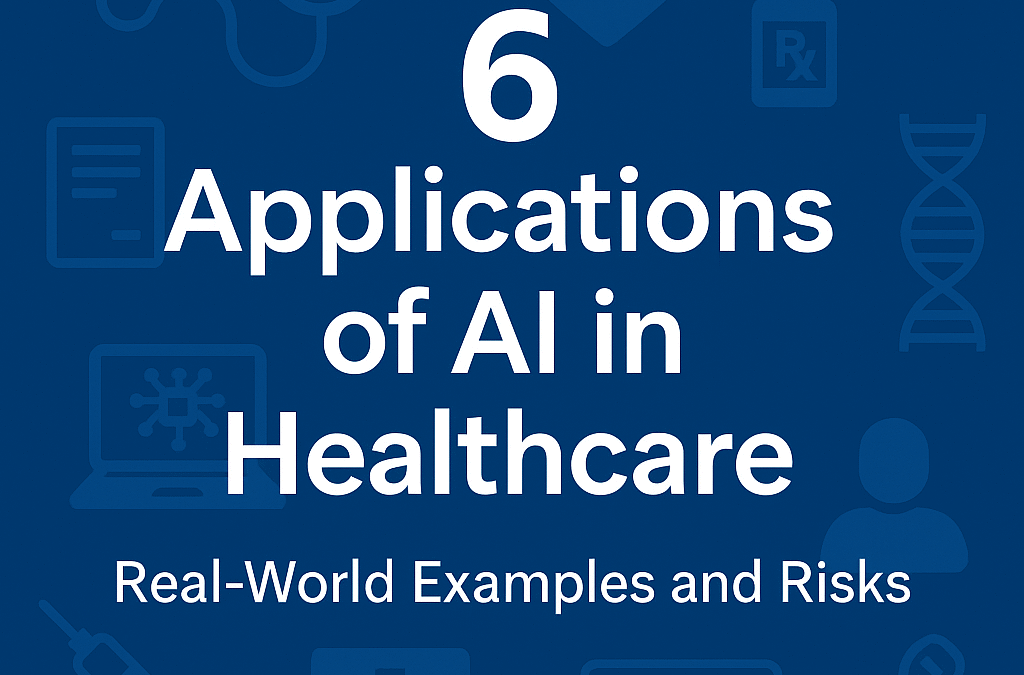Introduction
Healthcare is undergoing a transformation driven by artificial intelligence (AI). What was once experimental is now shaping how doctors diagnose diseases, how hospitals run operations, and how patients experience care. From reading CT scans to drafting clinical notes and optimizing operating room schedules, the applications of AI in healthcare are broad and growing.
AI is not here to replace clinicians—it is here to assist them. When used responsibly, AI systems reduce administrative burden, improve access, and provide timely insights that support better outcomes. But to make informed choices, patients, providers, and decision-makers need a clear view of how AI is being used today.
This article explores the pros and cons of AI in healthcare, backed by real-world case studies, expert references, and ethical considerations.
If you’re new to the basics, start with our primer: What is AI in Healthcare. For a patient-level view, see How AI is Helping Doctors and Patients Every Day.
Applications of AI in Healthcare
1. Clinical Diagnosis and Imaging Support
Stroke Triage (Viz.ai)
In 2018, Viz.ai became the first AI stroke triage tool cleared by the FDA. It analyzes CT angiography scans, identifies suspected large vessel occlusion strokes, and automatically alerts stroke teams. This has been deployed in over 1,600 U.S. hospitals, helping reduce time-to-treatment and improving patient survival chances.
Diabetic Retinopathy Screening (IDx-DR)
IDx-DR was the first autonomous AI diagnostic approved by the FDA (2018). It allows primary care providers to perform retinal screenings for diabetic retinopathy without needing an ophthalmologist on site, expanding access to vision-saving care.
Colonoscopy Assistance (GI Genius)
The GI Genius system (FDA De Novo 2021) uses AI during colonoscopy to highlight suspicious polyps in real time. Clinical studies show a measurable increase in adenoma detection rates, reducing missed lesions.
Pathology Support (Paige Prostate)
Paige Prostate became the first FDA-authorized AI pathology tool (2021). It assists pathologists in analyzing prostate biopsy slides, improving accuracy and consistency in cancer detection.
Cardiology at the Stethoscope (Eko)
Eko’s AI-enhanced stethoscopes, FDA-cleared in 2022 and 2024, detect heart murmurs and screen for low ejection fraction. These tools allow clinicians to identify cardiac conditions during routine exams, potentially preventing hospitalizations.
2. Documentation and Administrative Automation
AI is reshaping back-office and documentation workflows, reducing burnout and giving clinicians more time with patients.
Ambient AI Scribes
Doctors spend hours each day typing into electronic health records (EHRs). AI scribes now capture conversations during visits and draft notes for clinician review. At Kaiser Permanente, ambient AI scribes were used 2.5 million times in a single year, saving an estimated 15,791 hours of documentation work
Digital Intake and Symptom Capture
Platforms like Phreesia handle patient intake forms and symptom histories digitally before visits. By 2024, Phreesia had processed over 170 million patient visits, streamlining workflows and reducing bottlenecks at the front desk.
3. Patient Engagement and Virtual Advice
Patients increasingly interact with AI tools outside of hospital walls. These applications extend access and improve follow-up.
24/7 Symptom Assessment (Cedars-Sinai Connect with K Health)
Cedars-Sinai launched its Connect service with K Health, combining AI symptom checkers with physician review. In its first year, over 42,000 patients used the platform for round-the-clock access. The AI drafts intake summaries, which are reviewed and confirmed by licensed clinicians.
AI Text Follow-Ups (UPenn “Penny”)
At the University of Pennsylvania, the “Penny” system sends daily texts to chemotherapy patients, checking whether medications were taken and monitoring for side effects. The system escalates issues to clinicians when needed, improving adherence and safety.
4. Hospital Operations and Workflow Optimization
Hospitals are using AI to optimize patient flow, reduce delays, and improve resource utilization.
Operating Room Optimization (Qventus, LeanTaaS)
AI scheduling and prediction tools have improved operating room use across U.S. health systems. For example, MultiCare Health reported a 16% increase in staffed OR utilization, while OhioHealth saw an 11% increase in block utilization after adopting LeanTaaS.
Financial Impact (Banner Health + Qventus)
Reports highlight that AI-driven scheduling platforms at Banner Health delivered double-digit ROI by reducing delays and filling unused OR capacity.
5. Population Health and Risk Stratification
AI models are used to identify high-risk patients and guide care management. But design matters.
Bias in Risk Algorithms
A Science (2019) study found that a widely used U.S. health risk algorithm systematically under-identified Black patients, because it used cost as a proxy for health need. Redesigning the algorithm doubled the number of Black patients flagged for extra care.
Sepsis Prediction Challenges
The Epic Sepsis Model, once widely marketed, underperformed in external validation, showing only moderate accuracy (AUC 0.63). This highlights the importance of independent validation and monitoring.
6. Drug Discovery and Clinical Trials
Pharma companies use AI to identify new compounds, predict protein structures, and optimize trial recruitment. While this is more upstream than bedside care, the impact is significant: faster discovery of treatments and diagnostics that eventually reach hospitals and patients.
Regulatory and Privacy Framework in the U.S.
How AI Improves Medical Imaging and Scans
-
FDA Oversight: Many AI tools are regulated as Software as a Medical Device (SaMD) and require De Novo or 510(k) clearance. Always check FDA labeling for approved indications.
-
HIPAA Compliance: Hospitals must protect patient data through HIPAA Privacy & Security Rules. AI vendors must sign Business Associate Agreements (BAAs).
-
Ethics and Equity: WHO and AMA emphasize transparency, human oversight, and continuous monitoring for fairness.
Risks of AI in Healthcare Diagnosis (Bias, Black Box Problems)
-
Bias and Equity: Poorly designed models can worsen disparities.
-
Performance Drift: AI can degrade over time; requires ongoing validation.
-
Over-trust: AI is a support tool, not a replacement for clinicians.
-
Privacy Concerns: PHI must be secured, especially with cloud-based tools.
Checklist for Evaluating AI Tools
-
FDA authorization & evidence – always verify.
-
Workflow fit – does it integrate into daily practice?
-
Equity testing – subgroup performance must be transparent.
-
Security & HIPAA compliance – confirm vendor protections.
-
Continuous monitoring – track accuracy and safety in real time.
-
Patient consent – especially for ambient or voice-based tools.
Real-World Snapshots (Quick Proofs)
-
Viz.ai – FDA-cleared stroke triage, used in 1,600+ hospitals.
-
UPenn “Penny” – daily check-ins for oral chemotherapy.
-
Cedars-Sinai Connect – 42k+ patients in first year with AI + MD review.
-
Kaiser Permanente AI Scribes – 15,791 hours of documentation time saved.
-
Qventus/LeanTaaS – improved OR utilization and ROI.
Conclusion
The applications of AI in healthcare are already delivering value in U.S. hospitals—from reading scans and catching polyps to cutting paperwork and improving operating room schedules. The best results come when AI tools are FDA-cleared, HIPAA-compliant, tested for equity, and always reviewed by clinicians.
AI is not a replacement—it’s a partner. Used wisely, it strengthens the human side of medicine.
The future lies in balance:
- Adopt AI where it augments clinicians, not replaces them.
- Keep humans in the loop, ensuring oversight and accountability.
- Build equity into AI design, making tools accessible across populations.
- Update regulations and training, aligning technology with patient-centered care.
If embraced responsibly, AI can help deliver a healthcare system that is more precise, efficient, and equitable—without losing the compassion at the heart of medicine.
FAQs
1. Which applications of AI in healthcare are most widely adopted?
Imaging support (stroke, colonoscopy, diabetic eye disease), documentation aids (scribes), patient intake, and hospital workflow optimization.
2. Do these AI tools replace doctors?
No. All FDA-authorized tools are designed to support—not replace—clinicians.
3. How safe are AI scribes for privacy?
They must comply with HIPAA. Leading health systems use encrypted, consent-driven systems.
4. What’s the biggest risk of AI in healthcare?
Bias and inequity. If models are not validated, they can harm underserved groups.
5. Are smaller clinics adopting AI?
Yes. Cloud-based AI tools like scribes and intake systems are becoming affordable for community clinics.

